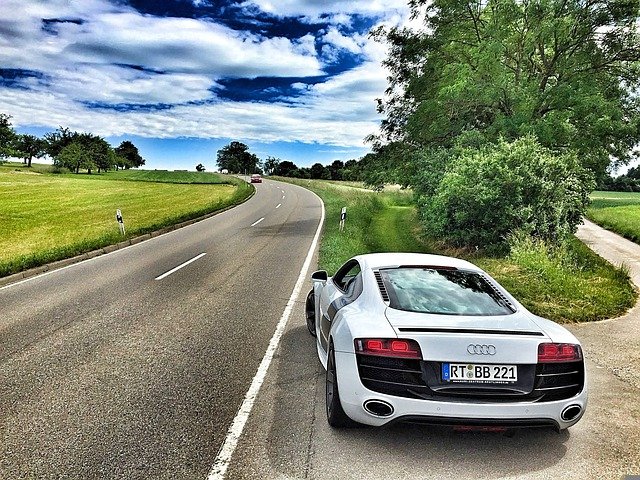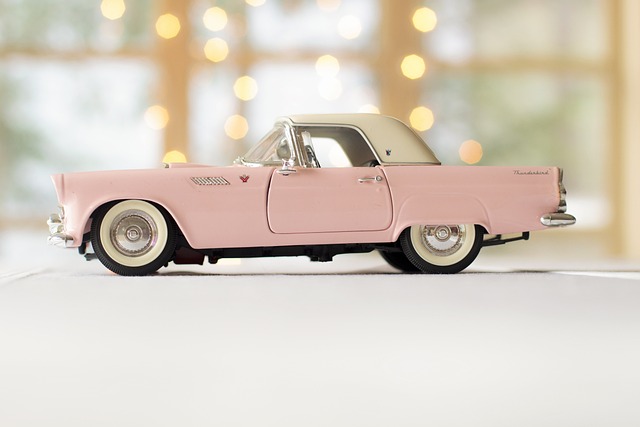Our Methodology
This guide has been assembled using the knowledge gained from decades of experience as an automotive enthusiast; both real cars and radio-controlled. While RC vehicles are still a considerable investment in terms of time and money, a radio-controlled car is very much a discretionary purchase. While we take this as seriously as the purchase of an actual car, the attributes leading to a judgment of “best” are far more ethereal.
We first looked at a few more quantitative data points for judging; is it repairable, are parts easily sourced, and is it appropriately priced? Then, we looked at things from a more qualitative standpoint; is this truck fun, will performance match expectations, is it a good value? You aren’t buying a new microwave, you’re buying an expensive toy, it better provide a thrill worthy of the bill.
Best RC Truck Reviews & Recommendations
Specs
- Kit Type: Ready to run, requires battery pack and charger
- Size: 17.5 x 12.25 x 7 inches
- Skill Level: Intermediate/Advanced
Pros
- Drive it anywhere from yards to tracks to skate parks
- Seriously fast, but stability management and driving modes make it new-driver friendly
- Magnum gearbox uses all metal gears and alloy motor plate
- All-around performer that races and bashes better than most
Cons
- Form follows function, not reality
- All in, this is some real money
The Traxxas Rustler is classified as a stadium truck or basher. Given it looks nothing like real versions of the former, the latter is the more appropriate name. The Rustler and other bashers are the direct descendants of the buggies that brought RC into the mainstream in the 1980s. It’s meant to do burnouts, drifts, jumps, and all the socially unacceptable things we would love to do in our real cars.
Hobby shops are stuffed with these things, but we’re zeroing in on the Rustler for numerous reasons. Firstly, Traxxas repair and hop-up parts are available everywhere and at reasonable prices. The Rustler VXL we have linked above is the latest version. A product of continuous innovation, this version features the latest transmission containing all metal gears, which will increase longevity given the VXL’s massive power. All that power comes from the Velineon brushless motor and speed controller system. Using an 11.1-volt lithium battery, the Rustler is capable of 70 miles per hour — actual speed, not some scale equivalent.
Eschewing realism for radness, the Rustler is just as at home jumping in a skate park as it is racing on the off-road track. Traxxas knows that anything this powerful will be a handful for inexperienced drivers, so it not only has a power restricted training mode, but also variable stability management. The powertrain is capable of using either nickel-metal hydride or lithium polymer batteries, so performance can also be limited by voltage selection. Bashing or racing, inexperienced or seasoned vet, the Traxxas Rustler VXL will be a fun, reliable truck.
Specs
- Kit Type: Ready to run, everything included
- Size: 22.4 x 11.7 x 8.4 inches
- Skill Level: Beginner/intermediate
Pros
- Everything in one box
- Realistic looks and performance
- Great for beginners but upgradable to racing performance
- Suspension setup is infinitely tunable out of the box
Cons
- Short course trucks aren’t as tough as stadium trucks
- Battery charger is good, but DC-powered only
You can find radio controlled trucks for less money than the Traxxas Slash 2WD but you won’t get nearly as much equipment per dollar. Yes, we did name the Rustler as best overall, but sometimes you want to save a little bit upfront and sock away some money for modifications later. Ease of upgrading is one of the Slash’s strengths, but what makes it a real value is the entire package.
For right around $250 you get the best entry-level truck available, a 2.4 GHz controller, waterproof electronic speed controller, receiver and steering servo, an 8.4-volt NiMH battery, and a 4-amp DC peak charger. Unlike some other entry-level trucks, the Slash’s suspension is fully adjustable using turnbuckle style threaded links which allow toe adjustment in front along with camber adjustment front and rear. The kit also includes a selection of shock pistons to change damping rates and different spring spacers to change preload.
The electronics offer three different modes: training, sport, and race. Descriptions of each mode can be found later in this piece. We love the realistic looks of the short course trucks and it’s hard to complain about the performance, but either from Traxxas or the aftermarket, every modification imaginable is available at your local hobby shop or even online. The Traxxas Slash is both a great starting point for a budding automotive enthusiast and a satisfying addition to a lifelong car fan’s hobby.
Specs
- Kit Type: Unassembled kit, requires controller, battery, and charger
- Size: 17.3 x 11.4 x 10.6 inches
- Skill Level: Beginner
Pros
- An updated truck originally released in 1986 drips nostalgia
- Build-it-yourself kit is a great learning experience
- Molded hard ABS plastic body looks great
- Same legendary chassis as The Frog
Cons
- Requires buyer to supply all electronics
- 1986 nostalgia with 1986 performance
Tamiya basically invented the modern radio-controlled car hobby. The Blackfoot you see here is a re-release of that same kit, with just a few upgrades. This updated Blackfoot features oil-filled dampers, upgraded half shafts, and a rear skid-plate, which are about the only differences from the original.
Unlike most modern RC cars, most Tamiya models, including this Blackfoot, require assembly. One of the best things about the hobby for kids is the exposure to STEAM concepts in the form of something practical and fun. Building the kit, literally from a big box of small parts, is not only great exposure to engineering but is also a real confidence booster.
Specs
- Kit Type: Ready to run, includes everything but AA batteries for the controller
- Size: 22 x 13 x 13 inches
- Skill Level: Intermediate
Pros
- Remotely locking front and rear differentials
- Two-speed transmission and transfer case
- Weighted aluminum wheels add realism
- Great looking Bronco/Blazer-ish body
Cons
- One-trick pony
- Parts aren’t as widely available as some competitors
Cross RC is best known for making lifelike scale models that also happen to be radio-controlled vehicles. Case in point, the AT4 EMO 4×4 looks almost too good to drive. Yes, the AT4 is based on the less than successful Demon, but the considerable challenges of that model have been worked out.
The rock crawler category in general is known for scale realism. The AT4 EMO is next level, offering a two-speed transmission, a working transfer case, remote-operated locking differentials, portal axles, and even metal wheels. Although this model doesn’t include one of Cross RC’s legendary hard plastic intricately detailed bodies, it is one of the nicest polycarbonate bodies on a crawler.
Keep in mind that this is a very specialized vehicle. It isn’t fast, it won’t jump, and you won’t even get a decent burnout out of it. If you’re looking for a multi-use truck, this isn’t it. If you want to get out in nature and lose yourself in a scale experience, this is one of your best options.
Specs
- Kit Type: Ready to run, requires battery packs and charger
- Size: 35 x 15.6 x 12 inches
- Skill Level: Advanced
Pros
- Huge in size, speed, and thrills
- Engineered more like a real desert truck than smaller scales
- Built tough and relatively easy to repair
- Might serve dual purpose as a lawn tractor
Cons
- Weighing 25 pounds at 50+mph, it’s literally a weapon
- At three feet long, you might need a real truck to transport it
If you want the ultimate RC truck experience and your budget would almost buy you a high-mileage real truck, you want to think big. The Losi Super Baja Rey 2.0 is a 1/6 scale vehicle; at roughly three feet in length, it is one-sixth the size of a real desert racing truck. But, with a top speed of over 50 miles per hour, it has much more than a sixth of the real thing’s performance.
We like the Losi Super Baja because of the realistic looks and performance afforded by using four-link suspension on the rear axle. It uses a full roll cage under the trophy truck body to augment the aluminum chassis’ stiffness. The threaded body coilover shocks are even made by actual racing supplier King Off-Road. The body is finished off with three LED light bars and realistic details like a jack, radiator fans, and fire extinguishers. It even includes two spare tires mounted in the bed.
The electronics are all built and sized for duty on a truck of this size, as well as being waterproof. You will need to supply two 14.8-volt lithium-ion battery packs, a compatible charger, and AA batteries for the included Spektrum controller, other than that, it comes built and ready to go. But, on top of the price, you also have to be realistic about where you can drive a truck this big and how you will transport it, it’s huge and hugely fast after all.
Our Verdict on Best RC Truck
Choosing a definitively best anything is nearly impossible. Every user has different needs and expectations for products. Any one of our best RC truck categories could be broken down into subcategories and probably divided again. We’ve selected the Traxxas Rustler VXL as Best Overall RC Truck because we like the ruggedness and go-anywhere abilities. If you have experience with RC trucks or even just an interest, we’d be interested in hearing your opinions in the comments. List what you expect an RC truck to do, maybe give an idea of what you consider a realistic budget, and let everyone know if you have an opinion of which truck is the best pick.
Consider Secondhand
When we start shopping for tools and products, we never overlook the secondhand market. In fact, it’s usually the first place we look. Whether you’re scrolling through Amazon’s Renewed section, eBay for car parts or tools, or flipping through the pages of Facebook Marketplace and Craigslist, you have hundreds of thousands of used tools, parts, and gear ready to be shipped to your doorstep. Refurbished to like-new status, they’ll be willing to give you many more years of faithful service all while saving you money. It also has the benefit of you not having to cut open an Amazon box inside an Amazon box with bubble wrapped around the part.
If those options above don’t have what you need, your local salvage yard is great for car parts, while swap meets are a great resource you should absolutely tap. Just Google either and head on down.
Secondhand Tips
To make your secondhand search easier, here are two tips for finding the best deals and making sure your new-to-you stuff wasn’t destroyed by the previous owner.
- Buying a box of parts that “just needs assembly” is a gamble; get a complete parts list from the seller.
- Older models can be just as enjoyable as brand new, but check parts availability before buying.
What to Consider When Buying A RC Truck
The best RC truck for me may not be the best for you. There’s such a huge variety of trucks out there, you need to ask yourself some questions before you start shopping. Where will I drive it most often? What is my current skill level in driving and mechanically (be realistic)? What is my budget for buying everything I need to get a running and driving truck and how much do I need to budget for maintenance and repairs? If I’m buying it for a child, am I really buying it for a child, or am I buying it myself and the kid may get to drive it every once in a while, and I should just be honest with myself/everyone and make sure I have the budget for two, or me and the kid will both be unhappy? With that totally hypothetical situation out of the way, let’s consider some different types of trucks and key features you will need to decide between.
Types of RC Trucks
Stadium or Basher Truck
This is currently the most popular style of radio controlled truck amongst enthusiasts and for good reason. A stadium truck is a good choice for just about any type of driving you’ll encounter. These are a direct descendent of the buggies and excel at jumping, drifting, and performing other various forms of bashery. Because of their toughness, they make great beginner vehicles, while at the same time, most off-road tracks have racing classes for them making stadium trucks a great choice for more experienced drivers also.
Short Course Trucks
Short course trucks will quite often share some components with stadium trucks, but offer a more realistic experience both in looks and driving. While still rugged, the smaller wheels which sit inside the body, along with a more realistic silhouette, make them a little less forgiving when landing huge jumps on anything but their tires. These are a great choice if you want to drive on the track or off-road, about the only thing they won’t do is Instagram-friendly skate park bashing.
Rock Crawler
The term rock crawling is a generic term that can easily be broken down into sub-categories like trail crawling, rock racing, etc. For the most part, the overall category is for vehicles that look realistic and are meant for driving slower than other trucks over far more technical terrain. These are specialized vehicles that excel in one discipline. While this is the fastest-growing niche in RC, keep in mind that purchasing one locks you into that one style of driving.
RC Truck Key Features
Brushed vs. Brushless Motors
Two types of electric motors power radio controlled trucks; brushed and brushless. A brushed motor uses a mechanical rotary switch called a commutator to change the polarity of wound copper coils on the internal rotor, called the armature. The armature sits inside permanent magnets and as the directionality of the armature changes, it spins.
The newer technology is brushless motors which transfer the heavy windings to the outside and the magnets are on the rotor. While brushed motors are mechanical, brushless ones are controlled by a logic chip.
Brushless motors offer better efficiency, which equates to more power output. On top of that, brushed motors require maintenance, or in most instances, replacement when the brushes wear out. The advantage is that brushed motors are considerably cheaper. Brushless motors will continue to fall in price. Eventually, all kits will become brushless.
Lithium vs. Nickel Batteries
When shopping for an electric RC vehicle, you’ll find two types of batteries. The older and less expensive tech is NiMH (nickel-metal hydride). Normally, these battery packs are made of individual 1.2-volt cells connected in series. You can find these in anything from 6.0 up to 9.6 volts. Since they are in series, the mAh (milliamp hour) rating of the pack is the same as an individual cell. NiMH is very stable, is less expensive, can be completely discharged without damaging the battery, and can be stored at any state of charge.
LiPo is the newer chemistry. These are usually made of 3.7-volt battery cells. LiPo has greater energy density, meaning comparable voltage and milliamp-hour packs will be smaller and lighter than NiMH. LiPo delivers a more consistent voltage, so your truck will be faster for longer. The downside of LiPo packs is they are damaged by overcharging or over-discharging. Running LiPos requires speed controllers and chargers with built-in voltage detection. The cost of LiPos and electronics is considerably more than NiMh.
Selectable Driving Modes
Radio-controlled vehicle manufacturers, like Traxxas, offer its faster models with selectable driving modes. For beginners, Training Mode cuts full power down to fifty percent. Given the crazy performance of brushless motors and LiPo batteries, putting the controller in the hands of a first-time driver is similar to putting someone with no high-performance driver education in a Viper. Sport and Race Modes offer full throttle, with the latter eliminating reverse.
RC Truck Pricing
Like full-scale trucks, the price range of radio-controlled versions are offered in a wide variety of prices. Our pick for Best Value Radio Controlled Truck, the Traxxas Slash can be found for right around $250. There are less expensive trucks out there, and some are really good. If you want something smaller scale, 1:28 scale indoor racers start as low as $60. At the other end of the spectrum, large-scale trucks can run into the thousands of dollars, with gasoline-powered ones being the top of the heap. Spending a few hundred dollars will get you well on your way to enjoying the hobby.
Once you have your truck, you may want to upgrade some equipment. NiMH battery packs are in the $40 to $60 range while LiPo will set you back between $50 to $100 depending on voltage and capacity. Battery chargers start at about $60 and can go up into the $200 range. Many offer Bluetooth connectivity which allows more functionality when connected to an app on a smart device. Repair and maintenance parts are relatively inexpensive and generally scale with the original purchase price of the vehicle. Polycarbonate bodies in 1:10 scale range from $30 for unpainted up to $70 for original painted equipment. It is worth your time to browse the parts racks to check out pricing when shopping for your vehicle.
FAQs
You’ve got questions. The Drive has answers.
Q: Are RC trucks for adults?
A: Yes, RC trucks are for everyone, children to adults, as long as you buy something age-appropriate. RC vehicles are one of the best hands-on engineering experiences for any age of enthusiast.
Q: Where is the best place to buy RC trucks?
A: Your local hobby shop is the best place to buy your truck and build a lasting relationship to get parts and technical help.
Q: Can cameras be used on RC trucks?
A: Installing a GoPro or similar camera on your RC truck is relatively easy and safe.
Source: https://www.thedrive.com/reviews/29780/best-rc-trucks



